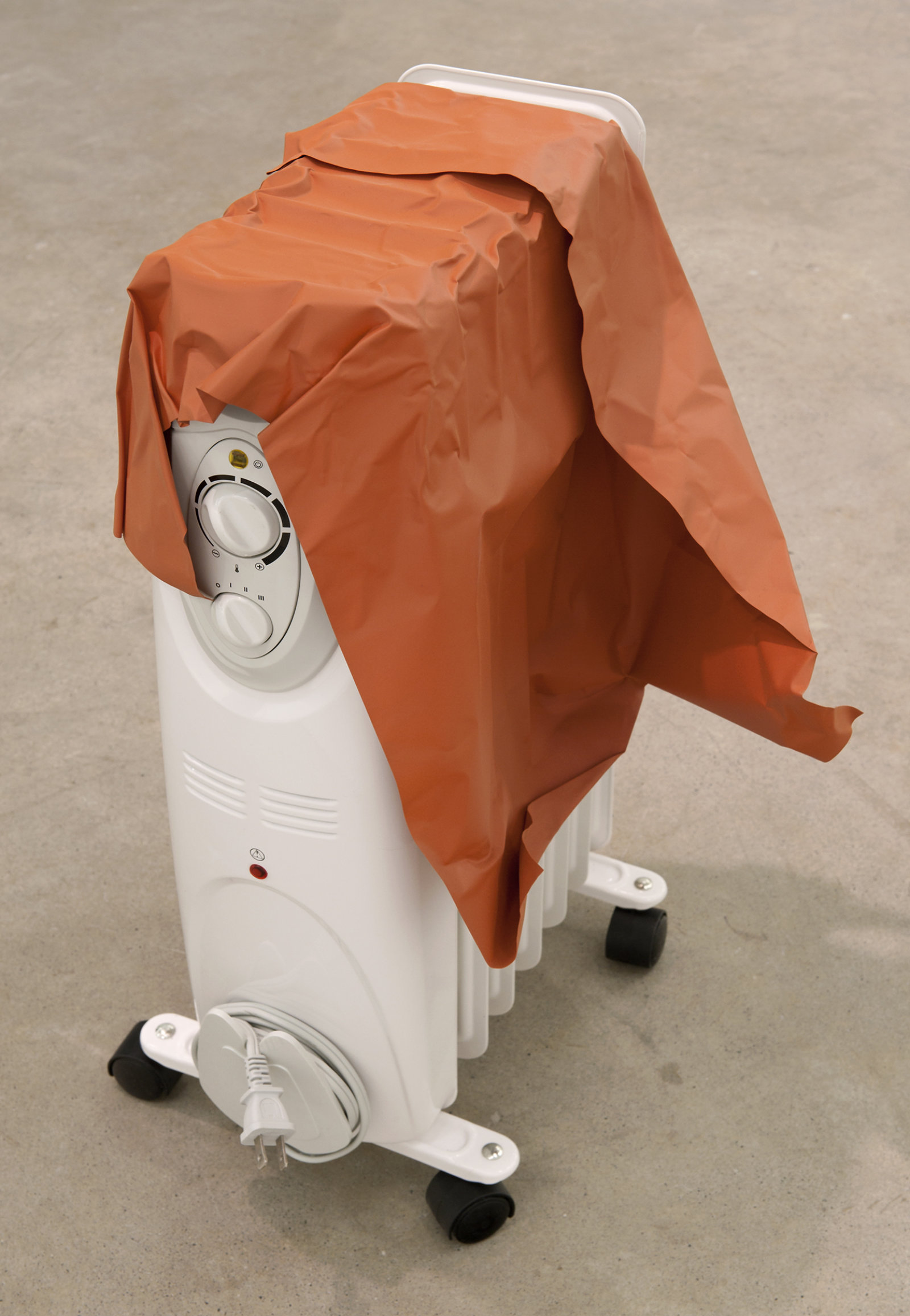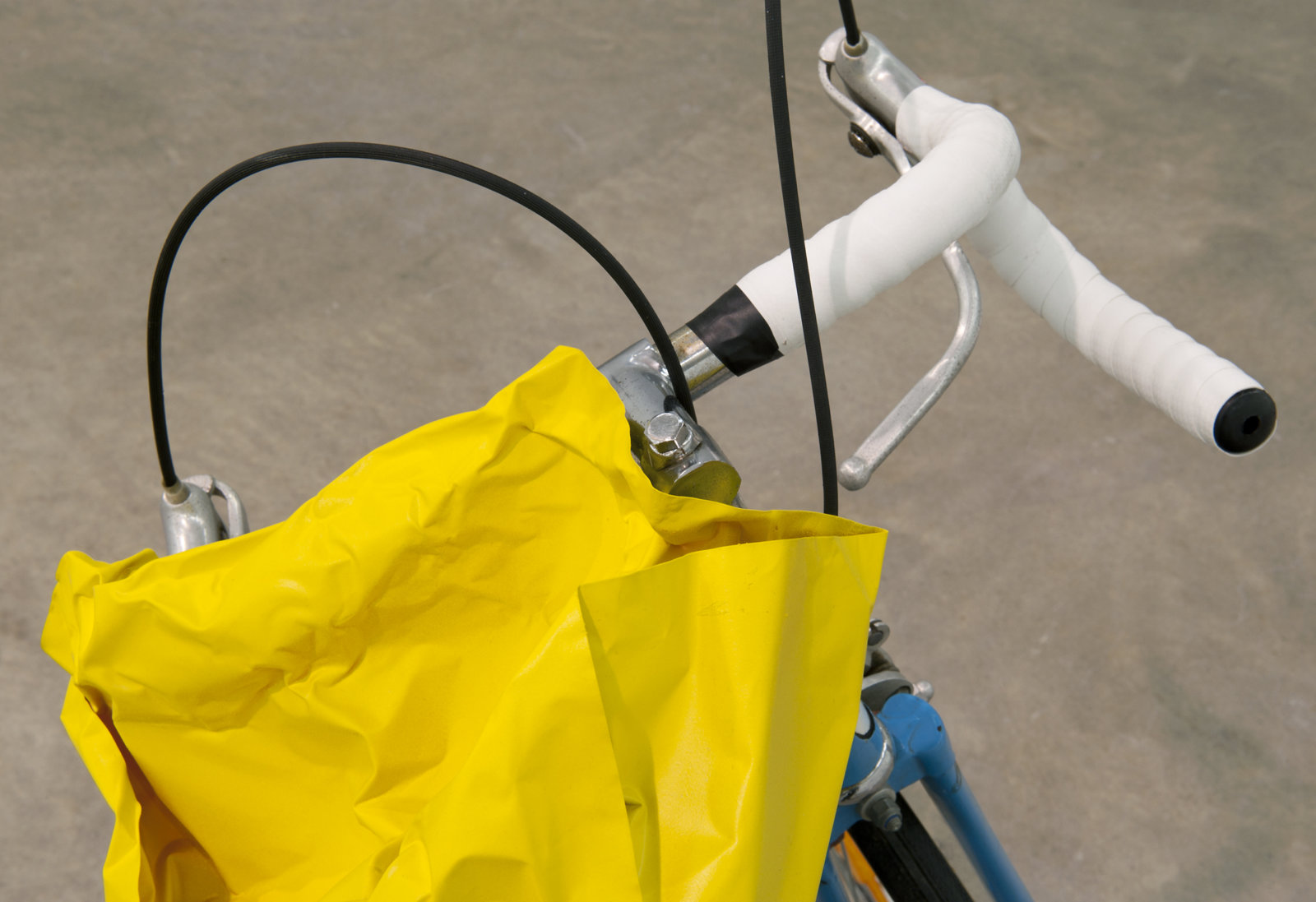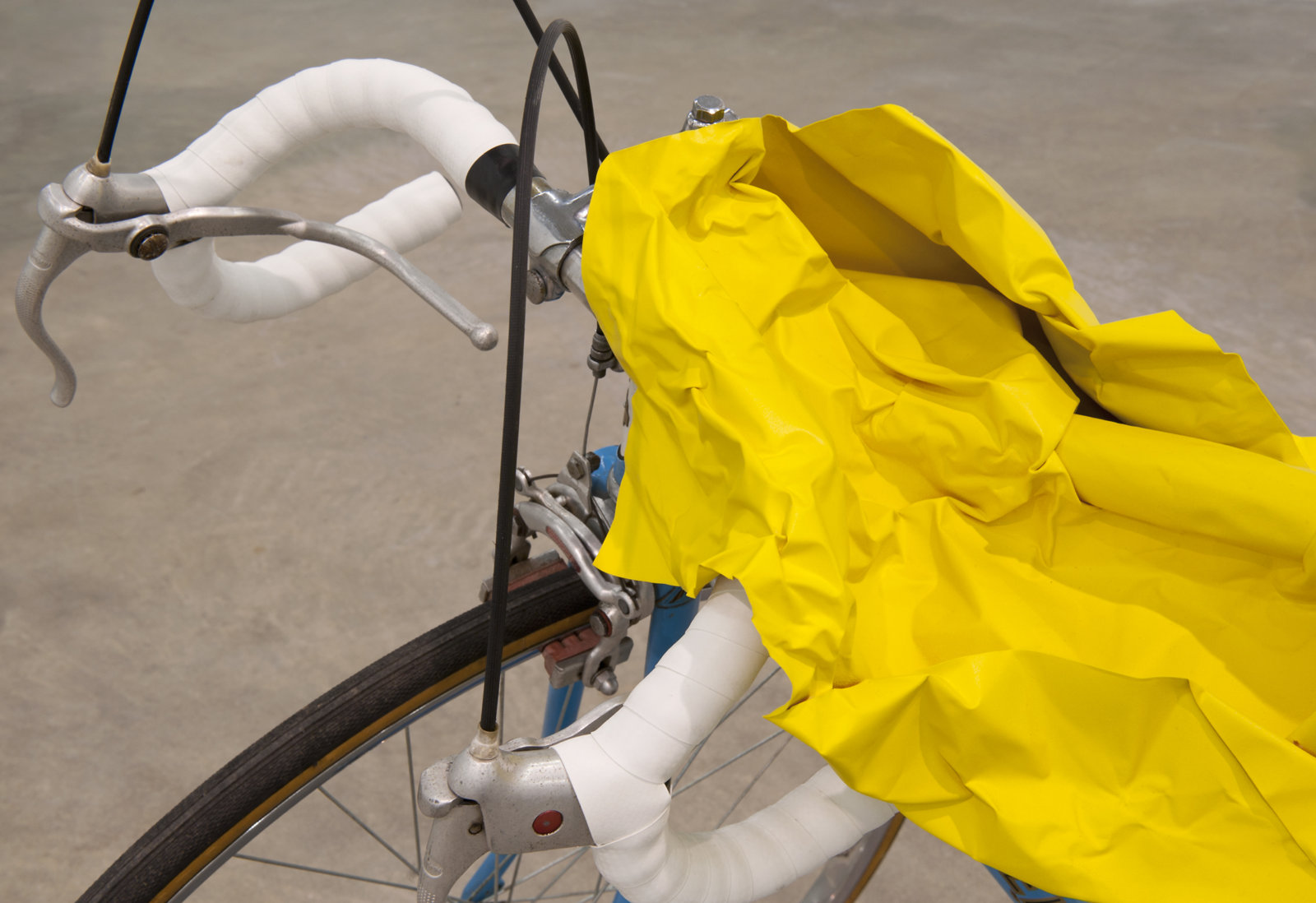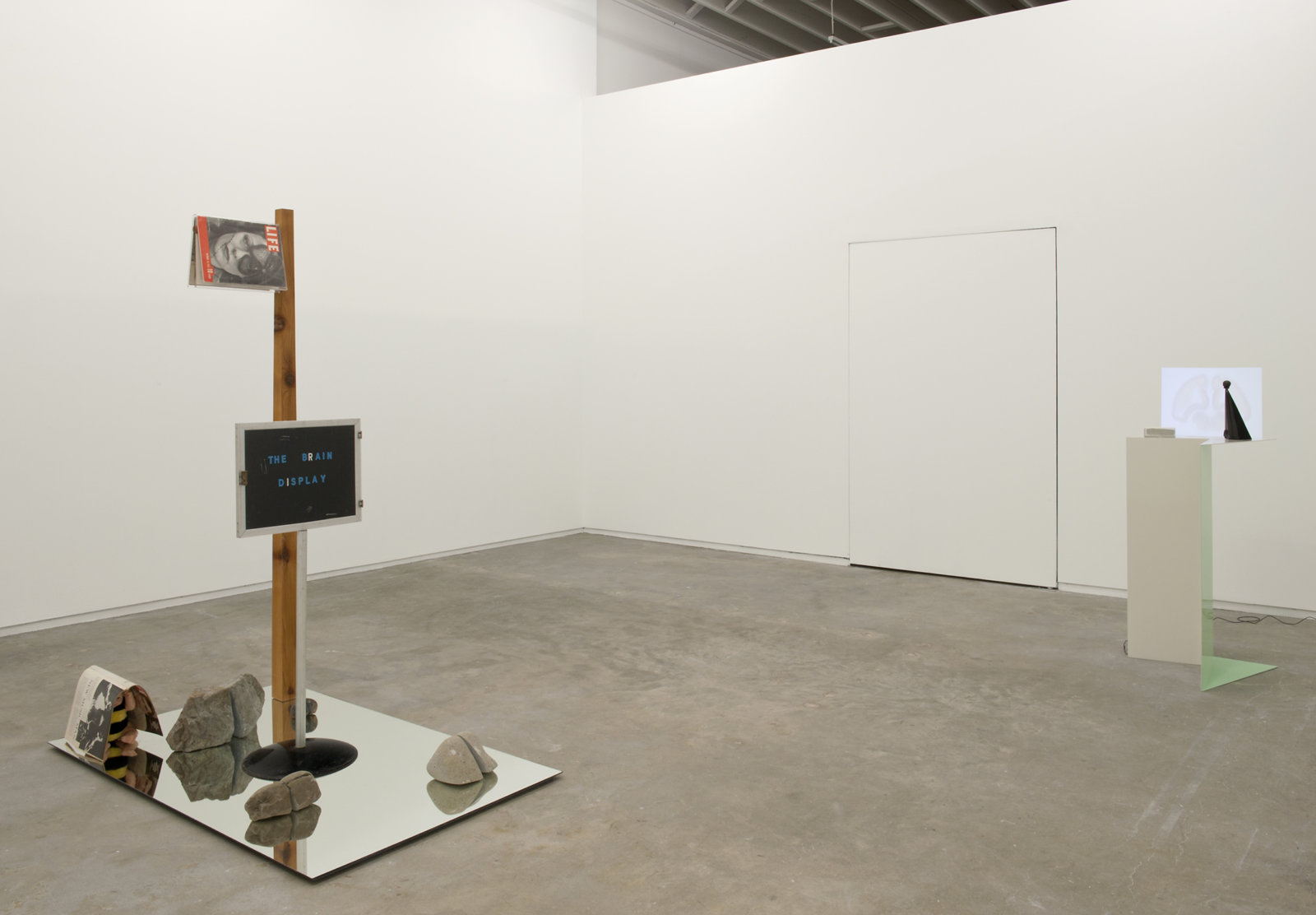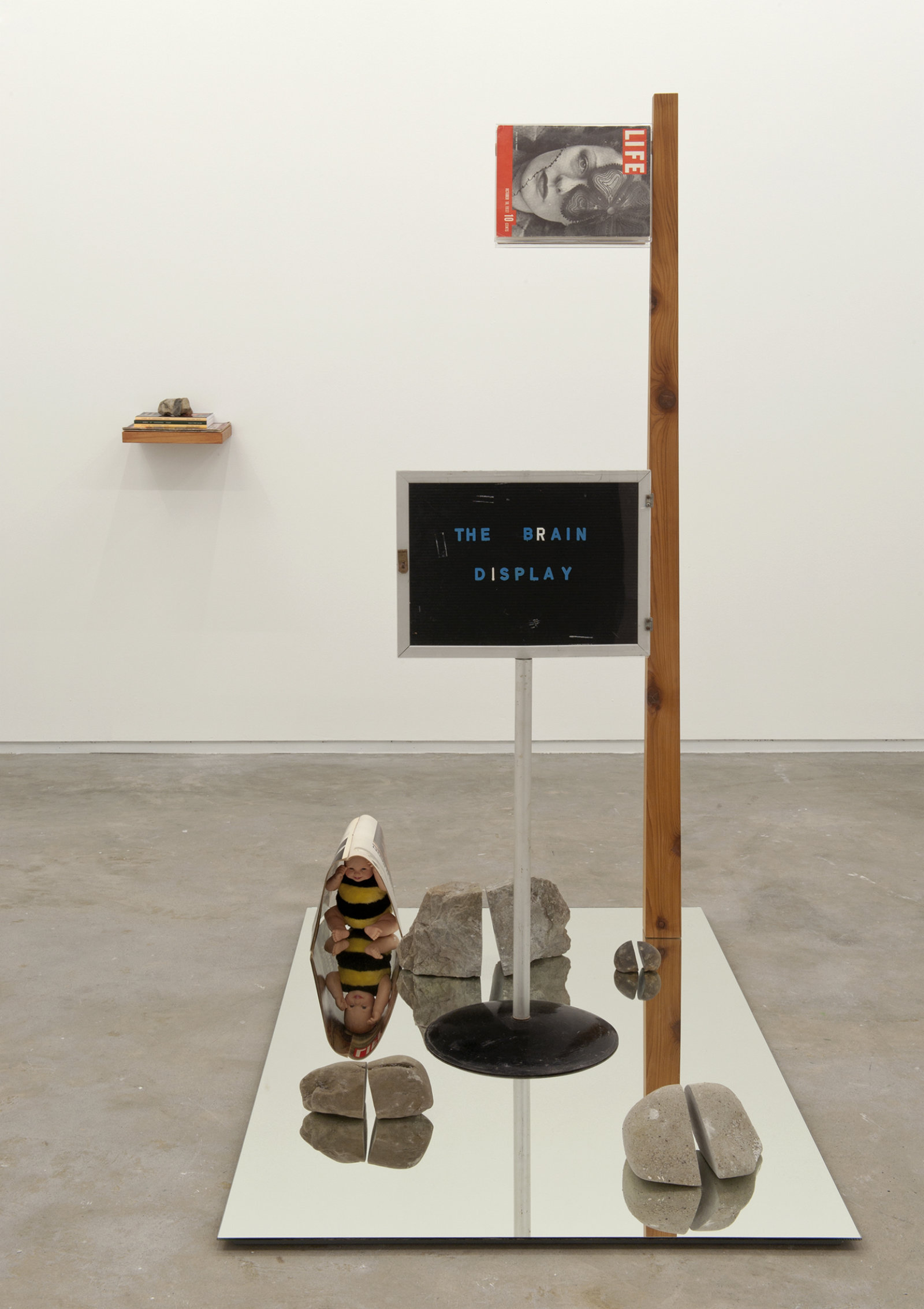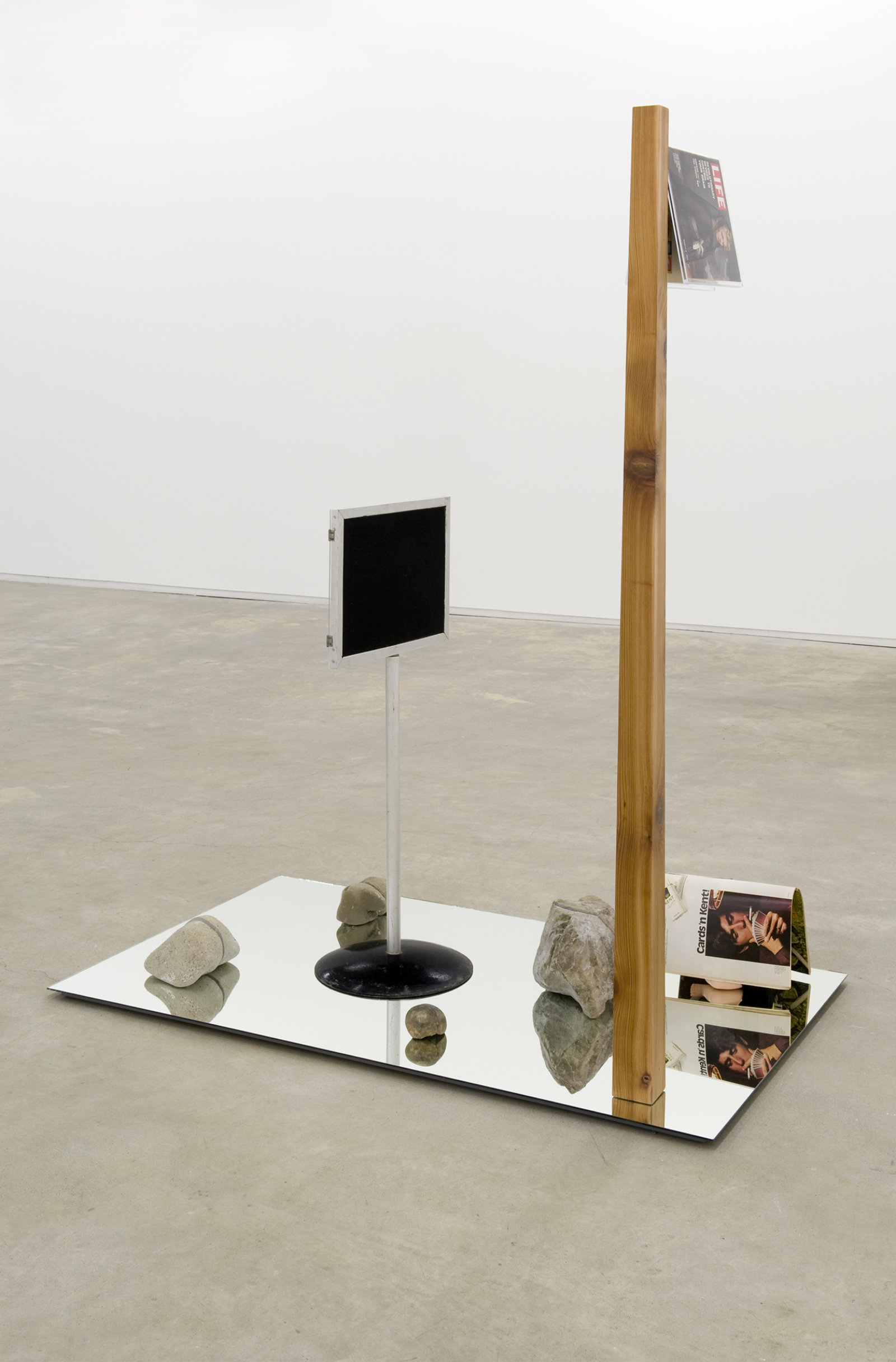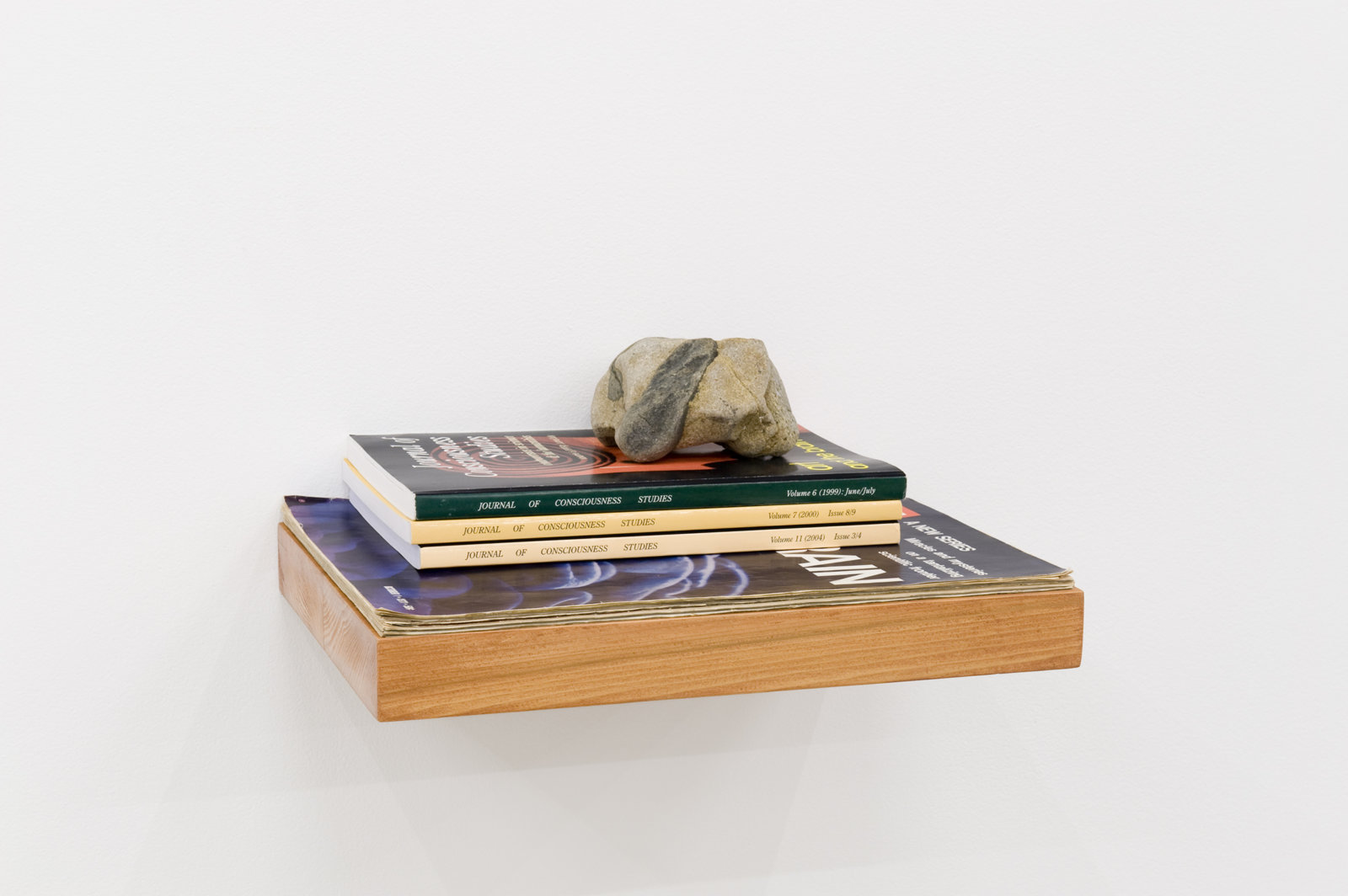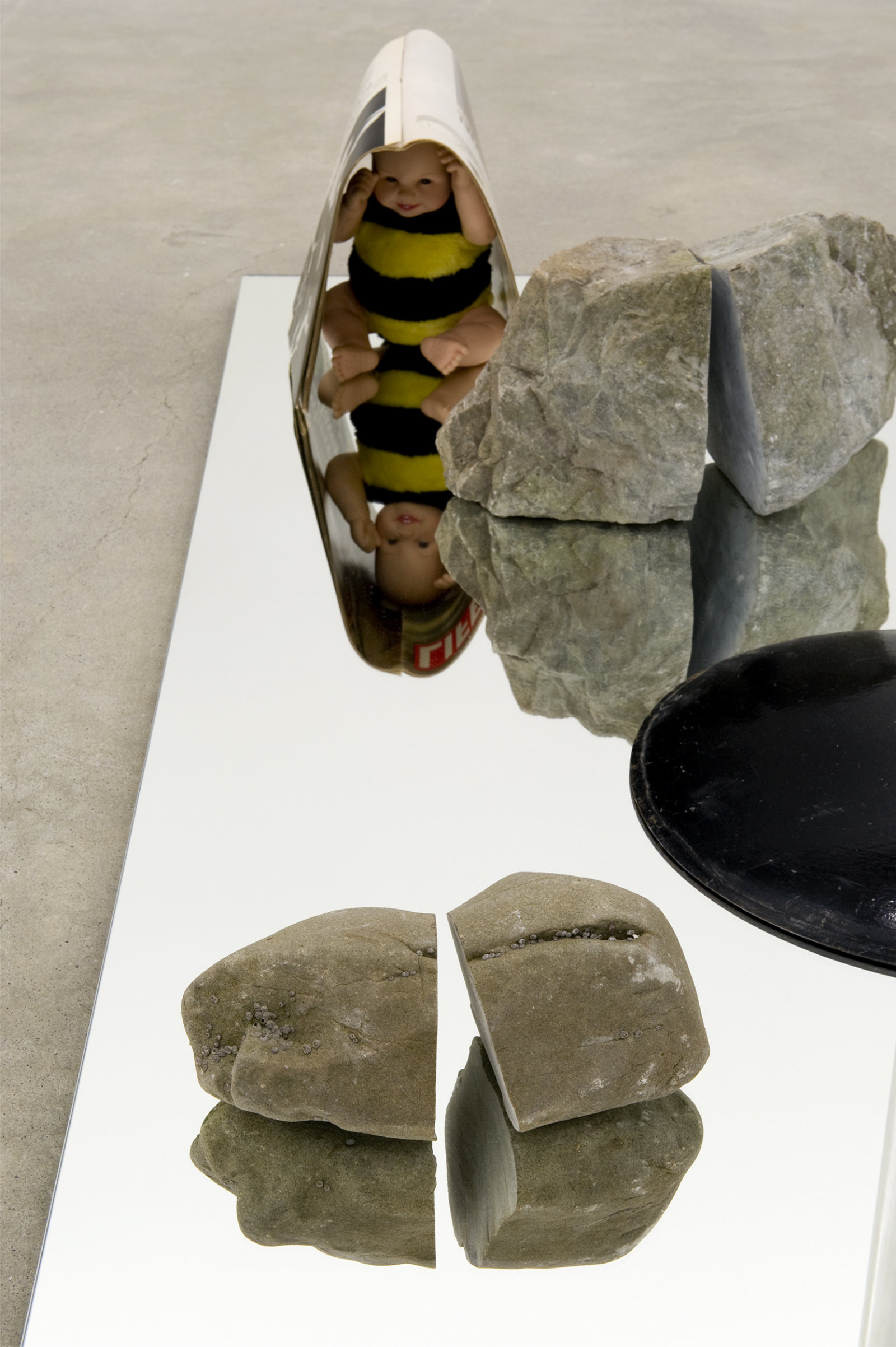Judy Radul – APRIL 27–JUNE 9, 2012
Judy Radul
April 27–June 9, 2012
Catriona Jeffries
Catriona Jeffries is pleased to announce a solo exhibition of new and recent work by Vancouver-based artist Judy Radul, whose ambitious and complex installations of recent years have addressed the generative range and limits of theatrical space and performance. Radul’s objects, cameras and performers trade roles, positions and tasks in the spatial choreography of her work, corporeally reanimating subject/object relations as contemporary technology increasingly functions in ways akin to human perception.
Theoretically anchored in the discourse around experience and perception developed by Merleau-Ponty and Deleuze as well as recent writing on neuroscience, the exhibition acknowledges the intertwinement between one’s own self and the world, while at the same time recognizing the limits of representation to wholly express this togetherness. As art thankfully produces inadequate forms and renditions of perception, the gap between a perception and its perception, a perception and its representation can thus be enacted and preserved. Radul purposefully steps into this gap to conjure joyful ‘bad models’ of perception in Object Analysis Spectator Poem (2012). A bottle, conch shell, fan, heater, chair, lectern, camera and clay bust all become entities on top of which partial swathes of painted copper sheeting lie across – like pajamas on a radiator – like ‘a thing on top of the thing’. To complete Object Analysis Spectator Poem, Radul took the works into the street to be photographed, however direct vision does not suit the encounter she is seeking. Rather, using a mirror held at arm’s length the objects are seen as they stood behind her. The image produced is an assemblage of forward and backward views. When installed in a spatial composition with the sculptures, they create a multifarious web of partial views, objects and forms.
Two new works, which Radul terms ‘displays’ rather than ‘sculptures’, also appear in the exhibition. Motivation (2012) is a collection of small rocks (and some rock-like objects) ordered in a row. Their armature is a tilted plinth constructed at the maximum degree possible before gravity would have its way and the rocks would roll off its surface. Silver Screen (2012) is an ode to curtains, screens, and the thrill of feminist and postmodern theory in the 1980s, incorporating a used theatre curtain and a 1987 copy of the British film journal ‘Screen’, encased in plexiglass.
Although skeptical of the reductionist impulse in much of the writing on science and aesthetics, Radul’s interest in ‘neuroaesthetics’ (an emerging and much contested field which explores the potential neurological basis for aesthetic experience), originated in World Rehearsal Court (2009) through her use of neuroscientist V.S. Ramachandran’s mirror box for healing phantom limb pain. Reference to the brain as an image, as well as a source of images, appears in The Brain Display (2010) and Midtown Plaza-end of the autopsy (2011). The new science of the brain is intensively remapping this organ, whose image exists as a kind of ultimate self-reflexive image.
Judy Radul born in Lillooet, BC, lives and works in Vancouver) was awarded the DAAD residency in Berlin this year and her major installation World Rehearsal Court traveled to the Henie Onstad Art Centre, Norway (2011) following its debut at the Morris and Helen Belkin Art Gallery, Vancouver. Recent solo exhibitions include Catriona Jeffries, Vancouver (2007); Oboro Gallery, Montreal (2006); Presentation House Gallery, Vancouver (2005); Set: Room 302 (collaboration with Geoffrey Farmer), Artspeak Gallery, Vancouver (2005); The Power Plant (2003). Her work has been included in numerous international group exhibitions, such as People Things Enter Exit, Catriona Jeffries, Vancouver (2011); Trust, 6th Seoul International Biennale of Media Art, Seoul, Korea (2010); Behind the Fourth Wall: Fictitious Lives – Lived Fiction, Generali Foundation, Vienna (2010); The Thing, Cultural Centre, Mechelen, Belgium, as part of All That is Solid Melts into Air, MuHKA, Antwerp (2009); Acting The Part: Photography As Theatre, Vancouver Art Gallery, Vancouver (2007); Intertidal: Vancouver Art and Artists, Museum Van Hedendaagse Kunst Antwerpen (MuKHA), Antwerp (2005); Videodreams: Between the Cinematic and Theatrical, Kunsthaus Graz, Austria (2004). She recently co-edited the book A Thousand Eyes: Media Technology, Law and Aesthetics published by Sternberg Press and a major monograph on her work, Judy Radul: People Things Enter Exit, was published by Presentation House Gallery in 2010.
Documentation by SITE Photography.















